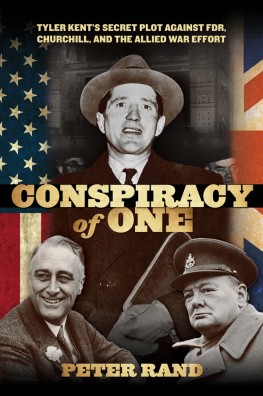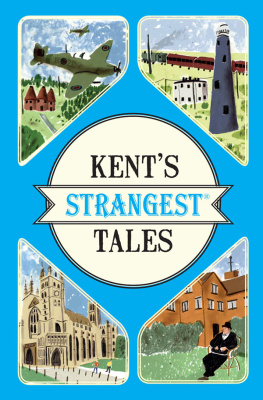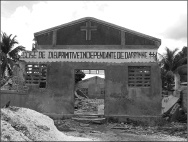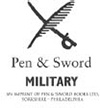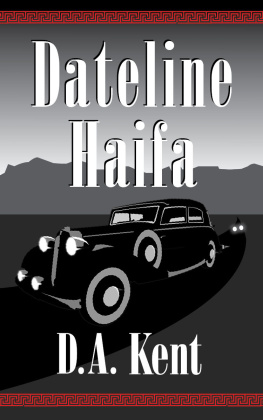All rights reserved, including the right to reproduce this book, or portions thereof, in any form. No part of this book may be used or reproduced in any manner whatsoever without written permission from the publisher, except in the case of brief quotations embodied in critical articles and reviews. The views expressed herein are the responsibility of the author and do not neces- sarily represent the position of the publisher. For information or permission, visit www.KentColeman.com.
This is a work of creative nonfiction. The events herein are portrayed to the best of the authors memory. While all the stories in this book are true, some names and identifying details may have been changed to protect the privacy of the people involved.
Please sign up for my newsletter at www.kentcoleman.com and find links to my social media, @TireGuyKent. I love to hear from my readers.
Booker T. Washington
Introduction
Its Not About the Mangos
The most beautiful stories always start with wreckage.
Jack London
I n 2008, two years after buying one of the highest revenue-producing tire stores in the nation, our sales began spiraling downwardquickly. At age 28, I knew nothing about the automotive world. I literally did not know the difference between a tire and a wheel. In 2006, when my brother and I bought the crowded little five-bay Big O Tires store in downtown Salt Lake City, it was bringing in $6 million in sales. Typical shops of that size had an annual revenue of around $1 million, maybe $2 million. But as the economic recession roared, sales in 2008 plummeted to $4.9 million at my shop. All I could think of to save the business was to lay off some of our most expensive employees. That decision nearly bankrupted me as sales continued falling to $4.1 million in 2009 and I depended heavily on store revenue to make our big loan payments.
In the elevator, right after the national Big O Tires awards banquet for our franchise chain in Dallas, a guy I did not know looked at my name tag and asked, Are you with the 9th South store in Salt Lake City?
I replied, Yes.
Looking puzzled, he asked, That store was legendary. Didnt it used to be number one in the country?
I got off the elevator without answering.
A Rough Start
Those who know me personally, and especially those in the tire franchise business, may find it hard to believe that conversation on the elevator back in 2010 ever took place. Weve come a long way since then, to be sure. But the early days were rough. That was largely due to my ignorance back then about the important role people play in creating a company culture that generates a successful environment in which everyoneowners, operators, managers, and employeescan not only survive but can become great.
How I got started in the tire business, which ultimately landed me in that elevator with a fellow franchise owner asking me questions for which I had no answers, was purely by chance. In the spring of 2006, my brother Kory met a guy who was selling a Big O Tires auto repair franchise. Kory had more home equity than I did, and he knew I was on the hunt for a new project after selling the small scrapbooking company my sister and I had founded. So when the opportunity came up to purchase a successful retail store, he and I borrowed the money to buy a franchise in Murray, Utah. I was excited and confident, but I did not yet understand what it meant to try to lead a team. Although Kory was my business partner, he was working full-time managing a multi-state division of a large corporation. He provided financial backing and great advice but was not involved in the day-to-day.
Despite jumping in mostly alone, I was enthusiastic. Entrepreneurship was in my blood, and the thought of what we could accomplish, while nerve-racking, was exhilarating as well. My computer was full of spreadsheets detailing our future success. My daydreams were full of nice vacations. But those visions of grandeur were just numbers on a screen; they werent real life. They existed only in my own head. I did not yet see the role that other people would need to play for those dreams to have a shot at becoming reality.
Within a few months, we bought another Big O Tires store in Salt Lake City, known as the 9th South location, which just happened to be the number one revenue franchise of that chain in the country, out of about 500 stores. We secured a large loan to purchase that shop in December of 2006, when credit was easy to get. We should not have been able to obtain that loan, and no bank in their right mind would ever give it to us today under those same circumstances. Before we knew it, we had a couple of tire stores doing a total of $9 million in revenue, we had almost no working capital, and my co-workers will attest that I knew absolutely nothing about tires, car repair, or running a multi-million-dollar franchise. Oh, and the global financial crisis was about to begin the next year.
Our fairly precarious financial situation and my lack of major team-building experience were perfect complements to my dearth of knowledge and experience in the auto service industry. It began to dawn on me the trouble I might be in when I attended a three-week training course in Denver, a requirement for getting the franchise. Of the six new students, I was the only one without auto shop experience... and that was obvious within about five minutes. The other students and the instructors were shocked that I did not know a thing about the business.
The first week of instruction covered all things tire-related. The language was completely new to meI knew nothing about tire sizes, speed ratings, or siping; nothing about plies, LT versus passenger, HP, or UHP. My pen burned holes in my notebook as I struggled to write down what teachers said would be the difference between making money and going out of business.
After explaining how to sell a tire, the instructor made each of us take a turn in front of the class, selling a tire. I watched and listened in a sort of quiet terror, hoping for the lunch break so everyone would forget about me. As the others showed their knowledge with a litany of tire features and benefits, I thought, I have bought tires, but never once have I known or cared about siping, speed ratings, or rubber compounds. I dont think I need to know this stuff in order to sell tires.
Unfortunately, we didnt break for lunch, they didnt forget about me, and my turn came up. Instead of focusing on technical details about a tire, which I didnt feel a potential customer would ever be concerned with, I sold the tire with the simple points I cared about, and I made that sales pitch using words I understood. I said, This is my favorite tire. It is safe, it has a 60,000-mile warranty, and it is worth its price. I am very confident youll love it.
Of course, this wasnt what the teacher wanted to hear. He said, Kent, you need to tell us at least three other features of the tire. Do you need to look at your notes?
I replied, I know the features, but I get bored thinking about them. The vast majority of regular people couldnt care less about those features. More information is just clutterit will create confusion and uncertainty about having to pick the correct


